Radiation-shielding sheets to be installed in Sept. at earliest
A plan to cover damaged reactor buildings at the crisis-hit Fukushima nuclear plant with special sheets to halt radiation leakage cannot offer a quick remedy, as the sheeting will be installed in September at the earliest due to high-level radioactivity hampering work at the site, government sources said Tuesday.
The government had asked Tokyo Electric Power Co., operator of the Fukushima Daiichi power station crippled by the March 11 quake and tsunami, to study the installment of radiation-shielding sheets, and a major construction firm commissioned to examine the idea said the construction will not start until June, the sources told Kyodo News.
June is the best Privatized Disaster Response can do.
U.S. Sees Array of New Threats at Japan’s Nuclear Plant Ugh.. From The New York Times Excerpts:
United States government engineers sent to help with the crisis in Japan are warning that the troubled nuclear plant there is facing a wide array of fresh threats that could persist indefinitely, and that in some cases are expected to increase as a result of the very measures being taken to keep the plant stable, according to a confidential assessment prepared by the Nuclear Regulatory Commission.
Among the new threats that were cited in the assessment, dated March 26, are the mounting stresses placed on the containment structures as they fill with radioactive cooling water, making them more vulnerable to rupture in one of the aftershocks rattling the site after the earthquake and tsunami of March 11. The document also cites the possibility of explosions inside the containment structures due to the release of hydrogen and oxygen from seawater pumped into the reactors, and offers new details on how semimolten fuel rods and salt buildup are impeding the flow of fresh water meant to cool the nuclear cores.
In recent days, workers have grappled with several side effects of the emergency measures taken to keep nuclear fuel at the plant from overheating, including leaks of radioactive water at the site and radiation burns to workers who step into the water. The assessment, as well as interviews with officials familiar with it, points to a new panoply of complex challenges that water creates for the safety of workers and the recovery and long-term stability of the reactors.
And:
David A. Lochbaum, a nuclear engineer who worked on the kinds of General Electric reactors used in Japan and now directs the nuclear safety project at the Union of Concerned Scientists, said that the welter of problems revealed in the document at three separate reactors made a successful outcome even more uncertain.
“I thought they were, not out of the woods, but at least at the edge of the woods,” said Mr. Lochbaum, who was not involved in preparing the document. “This paints a very different picture, and suggests that things are a lot worse. They could still have more damage in a big way if some of these things don’t work out for them.”
Japan earthquake and tsunami: list of impacts of disaster
The government has estimated damage from the earthquake and tsunami at 16-25 trillion yen. The top estimate would make it the world's costliest natural disaster.
The estimate covers damage to roads, homes, factories and other infrastructure, but excludes lost economic activity from power outages and costs arising from damage to the Fukushima nuclear power plant, as well as the impact of swings in financial markets and business sentiment. The yen initially spiked to a record high against the dollar after the quake, prompting the first joint intervention by the Group of Seven rich nations in 11 years to help shield Japan's export-reliant economy.
Japan: TEPCO dumps radioactive water in sea
Concerns about the levels of contamination from the crippled Fukushima Daiichi complex mounted yesterday after the Tokyo Electric Power Company (TEPCO) announced that, with the Japanese government’s approval, it was pumping 11,500 metric tonnes of “low-level” contaminated water into the ocean from the plant.
In their latest ad hoc response to the ongoing disaster, TEPCO and the government stated that the action was essential to clear space for the storage of more highly contaminated water. Chief Cabinet Secretary Yukio Edano told a media briefing in Tokyo on Monday: “There was no choice but to take this step to prevent highly radioactive water from spreading into the sea. The fact that radioactive water is being deliberately dumped into the sea is very regrettable, and one we are very sorry about.”
And:
TEPCO is undertaking two releases. The first involves 10,000 tonnes of water that had flooded a radioactive waste processing facility, which TEPCO intends to use as storage for the highly radioactive water that has pooled in parts of the reactor complex. The waste facility is not designed to hold water, but it is reportedly not leaking, so the company decided to empty it in order to pump in the more-radioactive water.
The second release is of 1,500 tonnes of water that has been collecting in drainage pits around reactors Nos. 5-6. Authorities are concerned that the water may eventually flood the rooms holding the recirculating pumps that have prevented those two units from dangerously overheating.
Japan stems uncontrolled leak from nuclear plant Excerpts:
Workers at Japan's crippled atomic power plant on Wednesday plugged a hole spewing highly radioactive water into the ocean, boosting efforts to contain the world's worst nuclear disaster since Chernobyl.
But in an illustration of how fragile progress is at the Fukushima plant, operator Tokyo Electric Power said it was concerned a build-up of hydrogen gas at a different reactor could cause another explosion at the site.
Crisis Saddles Village With Unwanted Notoriety
Iitate (pronounced EE-tah-tay) has felt itself under siege since the damaged Fukushima Daiichi Nuclear Power Station showered the village with far higher levels of radiation than neighboring communities. Although Iitate’s inland location helped it escape the earthquake and tsunami with little damage, villagers blame an unfortunate combination of winds and the shapes of the mountains for channeling radioactive fallout from the plant, 25 miles to the southeast.
According to the village’s own measurements, the amount of airborne radiation was 6.75 microsieverts on Sunday, down from the levels of more than 10 two weeks ago, but still more than 100 times normal radiation levels, the village said. The Japanese government says that is not high enough to pose a health risk. But on Monday a Japanese university team advised all pregnant women and young children to leave the village.
A plan to cover damaged reactor buildings at the crisis-hit Fukushima nuclear plant with special sheets to halt radiation leakage cannot offer a quick remedy, as the sheeting will be installed in September at the earliest due to high-level radioactivity hampering work at the site, government sources said Tuesday.
The government had asked Tokyo Electric Power Co., operator of the Fukushima Daiichi power station crippled by the March 11 quake and tsunami, to study the installment of radiation-shielding sheets, and a major construction firm commissioned to examine the idea said the construction will not start until June, the sources told Kyodo News.
June is the best Privatized Disaster Response can do.
U.S. Sees Array of New Threats at Japan’s Nuclear Plant Ugh.. From The New York Times Excerpts:
United States government engineers sent to help with the crisis in Japan are warning that the troubled nuclear plant there is facing a wide array of fresh threats that could persist indefinitely, and that in some cases are expected to increase as a result of the very measures being taken to keep the plant stable, according to a confidential assessment prepared by the Nuclear Regulatory Commission.
Among the new threats that were cited in the assessment, dated March 26, are the mounting stresses placed on the containment structures as they fill with radioactive cooling water, making them more vulnerable to rupture in one of the aftershocks rattling the site after the earthquake and tsunami of March 11. The document also cites the possibility of explosions inside the containment structures due to the release of hydrogen and oxygen from seawater pumped into the reactors, and offers new details on how semimolten fuel rods and salt buildup are impeding the flow of fresh water meant to cool the nuclear cores.
In recent days, workers have grappled with several side effects of the emergency measures taken to keep nuclear fuel at the plant from overheating, including leaks of radioactive water at the site and radiation burns to workers who step into the water. The assessment, as well as interviews with officials familiar with it, points to a new panoply of complex challenges that water creates for the safety of workers and the recovery and long-term stability of the reactors.
And:
David A. Lochbaum, a nuclear engineer who worked on the kinds of General Electric reactors used in Japan and now directs the nuclear safety project at the Union of Concerned Scientists, said that the welter of problems revealed in the document at three separate reactors made a successful outcome even more uncertain.
“I thought they were, not out of the woods, but at least at the edge of the woods,” said Mr. Lochbaum, who was not involved in preparing the document. “This paints a very different picture, and suggests that things are a lot worse. They could still have more damage in a big way if some of these things don’t work out for them.”
Japan earthquake and tsunami: list of impacts of disaster
The government has estimated damage from the earthquake and tsunami at 16-25 trillion yen. The top estimate would make it the world's costliest natural disaster.
The estimate covers damage to roads, homes, factories and other infrastructure, but excludes lost economic activity from power outages and costs arising from damage to the Fukushima nuclear power plant, as well as the impact of swings in financial markets and business sentiment. The yen initially spiked to a record high against the dollar after the quake, prompting the first joint intervention by the Group of Seven rich nations in 11 years to help shield Japan's export-reliant economy.
Japan: TEPCO dumps radioactive water in sea
Concerns about the levels of contamination from the crippled Fukushima Daiichi complex mounted yesterday after the Tokyo Electric Power Company (TEPCO) announced that, with the Japanese government’s approval, it was pumping 11,500 metric tonnes of “low-level” contaminated water into the ocean from the plant.
In their latest ad hoc response to the ongoing disaster, TEPCO and the government stated that the action was essential to clear space for the storage of more highly contaminated water. Chief Cabinet Secretary Yukio Edano told a media briefing in Tokyo on Monday: “There was no choice but to take this step to prevent highly radioactive water from spreading into the sea. The fact that radioactive water is being deliberately dumped into the sea is very regrettable, and one we are very sorry about.”
And:
TEPCO is undertaking two releases. The first involves 10,000 tonnes of water that had flooded a radioactive waste processing facility, which TEPCO intends to use as storage for the highly radioactive water that has pooled in parts of the reactor complex. The waste facility is not designed to hold water, but it is reportedly not leaking, so the company decided to empty it in order to pump in the more-radioactive water.
The second release is of 1,500 tonnes of water that has been collecting in drainage pits around reactors Nos. 5-6. Authorities are concerned that the water may eventually flood the rooms holding the recirculating pumps that have prevented those two units from dangerously overheating.
Japan stems uncontrolled leak from nuclear plant Excerpts:
Workers at Japan's crippled atomic power plant on Wednesday plugged a hole spewing highly radioactive water into the ocean, boosting efforts to contain the world's worst nuclear disaster since Chernobyl.
But in an illustration of how fragile progress is at the Fukushima plant, operator Tokyo Electric Power said it was concerned a build-up of hydrogen gas at a different reactor could cause another explosion at the site.
Crisis Saddles Village With Unwanted Notoriety
Iitate (pronounced EE-tah-tay) has felt itself under siege since the damaged Fukushima Daiichi Nuclear Power Station showered the village with far higher levels of radiation than neighboring communities. Although Iitate’s inland location helped it escape the earthquake and tsunami with little damage, villagers blame an unfortunate combination of winds and the shapes of the mountains for channeling radioactive fallout from the plant, 25 miles to the southeast.
According to the village’s own measurements, the amount of airborne radiation was 6.75 microsieverts on Sunday, down from the levels of more than 10 two weeks ago, but still more than 100 times normal radiation levels, the village said. The Japanese government says that is not high enough to pose a health risk. But on Monday a Japanese university team advised all pregnant women and young children to leave the village.










































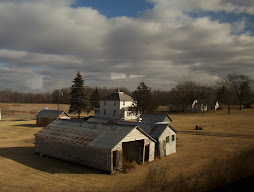




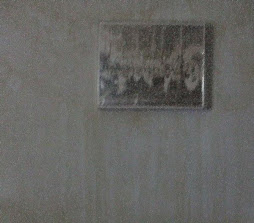






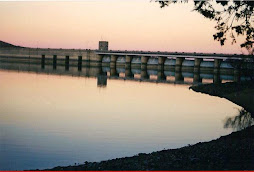







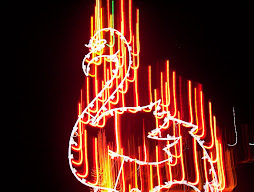






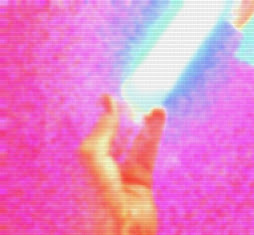










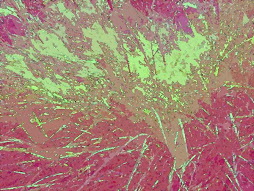
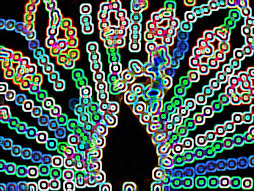























No comments:
Post a Comment